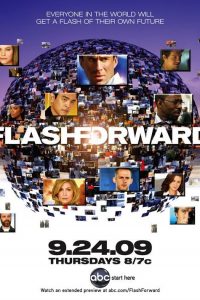“If You Get It Wrong, You’ll Get It Right Next Time”: A Review of Edge of Tomorrow
by Gary Westfahl
From one perspective, Edge of Tomorrow is simply the latest, and strangest, in a long series of films about D-Day, strategically released on the seventieth anniversary of the daring assault that led to the Allied victory over Germany. Again, we observe American and British forces landing on the beaches of Normandy, confronting despicable enemies, and ultimately achieving victory. Its protagonist, an inexperienced soldier who feels ill-prepared to face death, masters his craft and bonds with his diverse platoon mates in the traditional manner. But yes, there are some striking novelties in this telling of the tale: the invasion has been transplanted into the near future (the very near future, literally the “edge of tomorrow,” as one observes current French president François Hollande and current CNN anchors Wolf Blitzer and Erin Burnett); the opponents are not humans but sinister aliens who have occupied the European mainland; the soldiers are wearing exoskeletons equipped with advanced weaponry; and they prevail over their foes because one soldier, William Cage (Tom Cruise), is trapped in a time loop and can thus, by repeatedly reliving and learning from his experiences, transform humanity’s initial defeat into a resounding triumph. And the film thus offers a depressing lesson about how to get young people interested in history: by tossing in some futuristic gadgetry, time travel, and computer-generated monsters.
As is usually the case with contemporary Hollywood films, a number of different individuals contributed to the construction of this singular story. Its official inspiration, Hiroshi Sakurazaka’s 2004 novel All You Need Is Kill, provided the basic idea of alien invaders, called Mimics, that include a few individuals with the power to place themselves within a time loop; so, if they are defeated the first time, they can learn from their mistakes and attack again and again until they succeed. By means of contact with one Mimic, the human Cage starts going through his own time loops, and he soon teams up with another soldier, Rita (Emily Blunt), who previously had the same ability, to repeatedly land on that beach and gradually work out a strategy for defeating the aliens. Interestingly, Sakurazaka set his battle on a Japanese island being defended to keep the Mimics from invading Japan, suggesting that his aliens were intended to represent the Americans who fought their way from island to island to threaten Japan in World War II; seeking a safer target, screenwriters Christopher McQuarrie, Jez Butterworth, and John-Henry Butterworth moved the story to northern France, added all the references to D-Day, and made their aliens modern-day equivalents of the Nazis. Their other key change was to eliminate the novel’s final twist, having the soldier necessarily kill Rita in order to defeat the aliens, since that would surely upset audiences and prevent the desired outcome of having Cage and Rita develop a permanent romantic relationship (a possibility that the film’s ending allows for without really developing). Director Doug Liman kept the story entertaining, rising to the special challenge of any film about a time loop – keeping audiences interested while watching essentially the same scene several times – by employing different camera angles and artful editing to alleviate the aura of repetitiveness.
Next, Tom Cruise surely inspired the reshaping of the protagonist, an ordinary soldier in the novel; but since Cruise, as I noted, must always portray an “overgrown child,” his Major Cage is a soldier with a background in advertising who specializes in public relations, not fighting. And when he unwisely threatens British General Brigham (Brendan Gleeson), who wishes to send him into combat, he is reduced in rank to a private and assigned to enter the battle wielding equipment that he has never been trained to use. Somehow, the implausibility of a general, no matter how peeved, imposing such an arbitrary and illegal punishment is more disturbing than the dubious science (never explained) behind alien-generated time loops. But this contrivance may have seemed necessary, for how else would one explain having a fifty-two-year-old man serving as a foot soldier? Indeed, if Tom Cruise wishes to keep playing Tom Cruise, his screenplays may have to work increasingly hard to justify having an elderly man play a male ingénue’s role. Finally, one must compliment the innumerable individuals who worked on the film’s special effects, as they wisely decided that the novel’s fat, frog-like aliens were insufficiently menacing and strikingly made their Mimics resemble long, metallic vines that abruptly emerge from the ground and zoom toward their human opponents. Still, the rare alien “Alphas” that create time loops rather disappointingly look like corpulent versions of H.R. Giger’s Alien, perhaps a nod to Sakurazaka’s original vision.
The aspect of the film that all its contributors agreed upon, and the one of greatest interest to science fiction readers, is its attitude toward time loops, which have figured in a number of previous stories. In the classic time loop, individuals have certain experiences during a short period of time, are suddenly transported back in time to their starting point, and then engage in the same actions until they are again shifted back to the same starting point, again and again and again. Such stories allow for two denouements. First, the affected people could find themselves permanently trapped in the loop, as seems to occur in Philip K. Dick’s story “A Little Something for Us Tempunauts” (1974). This gloomy scenario is in keeping with Dick’s frequent suggestions that people may in fact not be in control of their own destinies, as also conveyed in his stories “The Minority Report” (1956) and “Adjustment Team” (1954). This heterodox concept is naturally anathema to filmmakers seeking to please audiences, who accordingly altered both stories while adapting them as the films Minority Report (2002 – review here) and The Adjustment Bureau (2010 – review here) to provide their heroes with genuine free will. Adapting All You Need Is Kill did not present this problem because Sakurazaka had already chosen the second approach to the time loop story – to allow the affected individuals to learn from their experiences and eventually escape from the loop, reaffirming the principle of free will. Thus, in this film and its fantasy counterpart Groundhog Day (1993), the protagonists keep responding differently during each iteration of their day and slowly make themselves better people: Cage is initially cowardly, manipulative, and inept, but his repeated battles make him into a brave, savvy, and admirable fighter, just as Bill Murray’s weatherman abandons his egocentric aloofness and embraces altruism. And in the end, both men are rewarded with the opportunity to again move forward with their lives.
In contrast to Dick’s dark fable, these films appealingly resonate with optimistic messages about the possibility of redemption for all individuals, even the most despicable and downtrodden. Since Cage dies at the end of each loop, to be reborn on the previous day, his situation can be related to the Buddhist belief that individuals can gradually improve themselves through a long series of reincarnations until they finally achieve nirvana – one character even tells another, “I’ll see you in the next life.” This idea can also be detected in most video games, as I argued long ago, since one’s avatar will typically die numerous times as the player masters the game’s demands to eventually achieve success. More broadly, the film seems to hearteningly advise anyone who has failed that they will always have the chance to succeed another time, as stated in the song that would have worked perfectly as a theme for this film, Gerry Rafferty’s “Get It Right Next Time” (1979):
You gotta grow, you gotta learn by your mistakes
You gotta die a little everyday just to try to stay awake
When you believe there’s no mountain you can climb
And if you get it wrong you’ll get it right next time (next time).
One can even connect Cage’s experiences to aspects of contemporary Hollywood filmmaking. After all, no film ever results from a single creative act: in the beginning, there is someone’s story – in this case, Sakurazaka’s novel; then, a series of screenwriters (here, undoubtedly, several more than the three credited writers) are assigned to achieve through multiple drafts a suitable screenplay; as filming proceeds, numerous changes might be improvised on the set; and after the completed film is shown to preview audiences, one might do some reediting or even film some new scenes before it is finally released. One can also discern this pattern in the careers of successful film stars, who may start their careers with some hits and misses before perfecting their screen persona and achieving the wisdom and clout to produce precisely the sorts of films that match their talents. In the case of Tom Cruise, one might say many things about his four most recent films – Mission Impossible: Ghost Protocol (2011), Jack Reacher (2012), Oblivion (2013 – review here), and this one – but if nothing else, they all qualify as remarkably well-crafted entertainments, as if the aging actor is working harder than ever to draw upon his long experience to select and polish each of his vehicles. Pondering these and many other examples, one must concede that Rafferty’s message, and this film’s message, is often correct: there are times when a person can in fact do something again and again until they finally get it right.
My concern, however, is that there are also times when life does not offer such opportunities, and some young people do not seem to understand that. Thus, a sobering contrast to this film is provided by the original D-Day: when he gave the final order to proceed with the invasion, Dwight Eisenhower was tormented because an experienced colleague had recently opined that it was destined to end disastrously; and he knew that if that man was correct, he would not be able to go back and do it again while employing a different strategy. That is why he and his advisers meticulously planned every aspect of the invasion and were ultimately triumphant. Contemporary youth, I sometimes fear, have not been properly schooled by their mentors and popular culture to recognize that second chances are not always available. For example, I have known college students who completely ignored the requirements of a course syllabus, which were carefully explained to them several times, and when they were then informed that they could not pass the class, they seemed genuinely surprised that they could not avoid this fate by explaining their personal problems and offering to do extra credit. And while failing one college class is not a matter of great concern, I worry that these students will later be facing their own personal D-Days, when they absolutely, positively must do something right the first time, and they will fail to appreciate the gravity of the situation until it is too late.
Yet one could also point to the film’s final scenes as a necessary corrective to the blithe optimism of its original premise. Without offering any details about the developments, Cage at one point apparently loses his power to loop back in time and hence, for the first time, must battle the aliens without the possibility of a redemptive rebirth. Accordingly, he becomes more cautious: advancing to attack, he previously would have charged into the open field, confident that if an alien killed him, he could later come back and take an alternate route. Now, he commandeers an aging aircraft to roll across the ground and provide himself with some protection as he moves forward. So, considering the film as a whole, one could say that it has two messages for America’s youth: yes, for a long time as you grow and mature, your kindly society will keep providing you with numerous opportunities to correct your errors and try again, but eventually, there will come a time when you only have one chance to do things properly.
It is hard to determine, though, whether the director and screenwriters actually intended to convey this message, or any message for that matter, as all of their characters are unusually circumspect about any matters not directly relevant to the plot. Rita at one point says that she is “not a fan of talking,” and there is something surprisingly evocative about the film’s final line: “What do you want?” Indeed, one asks, what do these characters want? To stay alive, of course, but everything else about their backgrounds and motivations mostly remains a mystery. As it happens, authors who devise intricate time paradoxes often focus more on manipulating their characters like pieces on a chessboard than on developing them, and in the case of this film, I don’t really regret the absence of the typical speeches in which characters reminisce about their childhoods or proffer platitudes about their personal beliefs, as they merely would have slowed the pace of its consistently involving story. And both Cruise and Blunt have been sympathetic characters in a sufficient number of films so that we can like them and relate to them without any revelations about their intimate thoughts.
A film that is seemingly striving to say nothing, to be sure, is also saying something, and this may represent the best summary of its central point: Edge of Tomorrow is a film about people who have a job to do (defeating aliens), and they do it very well; and it was made by people who had a job to do (making a successful film), and they did it very well. And if someone responds that such films are not genuine works of art, since they are failing to comment on the human condition, perhaps they are wrong. Perhaps having a job and doing it well are central to the human condition; perhaps that dedication to one’s work, regardless of personal issues, is the true lesson that I fear young people are not learning. In any event, under less than ideal circumstances, I have now completed the job that I had to do, and if not very well, I hope I have at least done it reasonably well.









It seems to me that a key plot point—required SPOILER ALERT!—was Cage’s attempt to desert. It really was pivotal in the character development. I don’t know whether you’d consider the character arc discreet, eschewing the ham-fisted theatrics so common today in the the golden age of melodrama? Or whether you’d deem it pointless, essentially nonexistent?
Another SPOILER ALERT!: The final reset is wrong. The aliens would have reset to undo the invasion, and Cage would have reset to the same time as before.
A good job all the way through, with a good smiler at the end. Rick Atkinson’s book on the European campaign has an Eisenhower quote that is, in my opinion, one of the greatest things any general ever said. On June 5, 1944, as the planes were heading for Normandy loaded with paratroopers and the ships were leaving the Channel ports, Eisenhower said, “I hope to God I know what I’m doing.” He was still fretting, right up to the last moment, after working fourteen hour days planning and preparing.
You can rest easy, Gary. You you did an admirable job of finding something to say about a movie that’s not worth saying anything about.